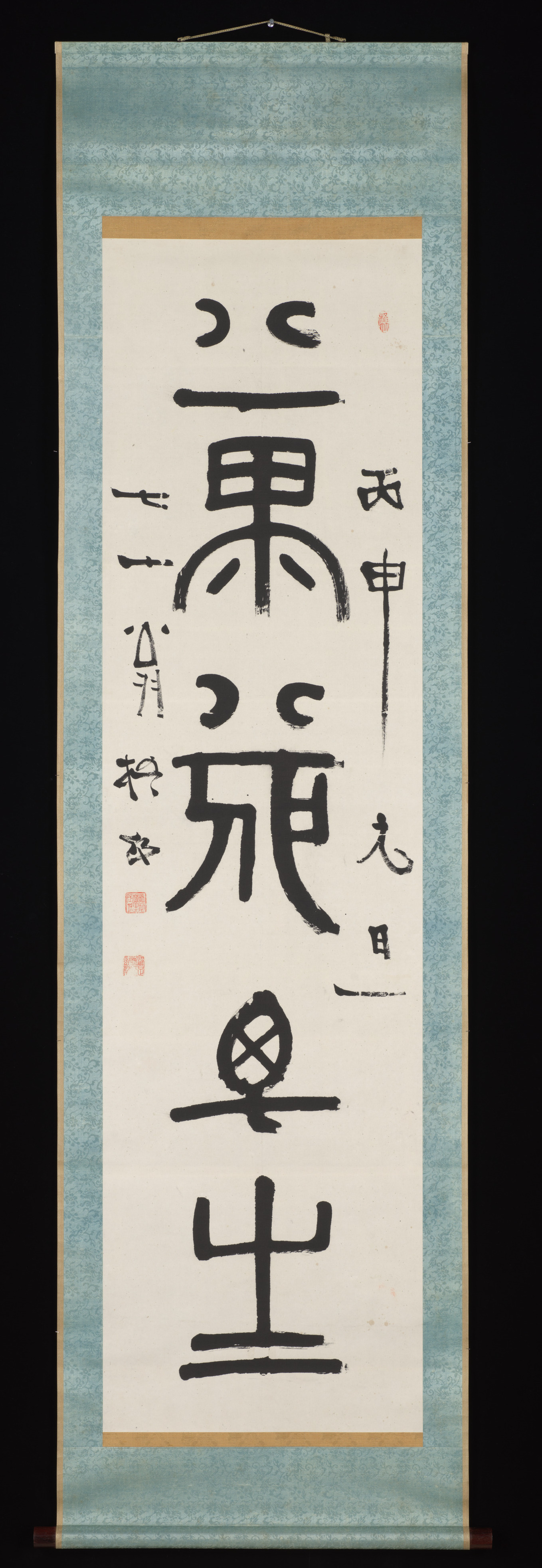Banzai, Banzai” (“Long Life, Long Life”)
Nakabayashi Gochiku I Japanese
Not on view
The calligrapher Nakabayashi Gochiku has inscribed the auspicious phrase “Banzai, Banzai” 萬歳萬歳, literally, “Ten-thousand years, Ten-thousand years,” or “Long life, long life” in an archaic form of seal script (tensho).
Gochiku was one of the most celebrated calligraphers of the Meiji era, known for his archaic style that was inspired by rubbings of steles and bronze vessels from early China. In his youth, he studied with poet-calligrapher Ichikawa Beian (1779–1913), and later in his career he studied with the Chinese Consul General Yu Yuanmei. He also traveled with Yu to China to further his studies in calligraphy. In 1931, he published Gochiku’s Discussions on Calligraphy (Gochikudō showa), in which he outlined his principles for creating calligraphy. He believed that calligraphers should strive to capture the essence of works from the Han and Wei dynasties, learn the brushstrokes of the Sui and Tang dynasties, and embrace the aesthetics of the Jin dynasty. He further stated that these principles should be carried out in works of calligraphy created by samurai devoted to serving the emperor.
Due to rights restrictions, this image cannot be enlarged, viewed at full screen, or downloaded.
This artwork is meant to be viewed from right to left. Scroll left to view more.



